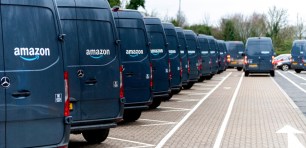
Sendle co-founder and CEO James Chin-Moody. Source: supplied.
Australian entrepreneur James Chin Moody loves to make curry, but he won’t settle for any old supermarket spice.
“We get our curry powder sent from Humpty Doo, it’s fantastic,” Chin Moody tells AAP of the Northern Territory culinary discovery.
Exposing the world to far-flung Australian small businesses is always front of mind for Chin Moody, the chief executive and co-founder of package delivery company Sendle.
He is renewing a push for Australia Post’s network to be opened up to other postal players, a move he believes would boost regional and rural business, lower shipping costs and improve service.
The model would mirror the United States Postal Service’s work share arrangement, which drives competition by allowing independent postal companies to use its infrastructure in exchange for reduced rates.
“The more we can do to bring prices down, the more competitive regional businesses can be,” Chin Moody said.
“That’s good for regional Australia, it’s good for the whole nation because small business is the lifeblood of the economy.”
The US model is likened to various internet providers being able to use National Broadband Network infrastructure.
The move was floated by Sendle, Team Global Express and other e-commerce businesses in submissions to the federal government’s postal modernisation process last year.
The review came amid the steep decline of traditional letter postage and the growth of parcel delivery, with the national carrier shipping about 500 million packages in 2022-23.
The government announced several reforms late last year, including plans to add more parcel collection points.
Access to equitable postal services in the regions is a pressing issue, as country populations and working patterns shifted after the COVID-19 pandemic.
Australia Post’s online shopping report, released on Monday, showed there was an 18% increase in online shopping rates among regional consumers between 2019 and 2023.
Communications Minister Michelle Rowland last week launched the construction of a $50 million Australia Post parcel facility at Brisbane airport to bolster the delivery network.
“It means that in a state like Queensland — where we have more people living outside its capital city than in it — we can service those communities so much better,” Rowland said.
Hot on its heels, Sendle has added more than 800 pick-up locations for international delivery, including many in regional and rural areas.
Chin Moody said regional Australia was ripe for technological disruption.
“There’s largely a functional monopoly in place around parcel delivery,” he said.
Business owner Kait Nugent, who began her jewellery business Barefoot and Blonde in rural Canada and has worked between Australian cities and regional Tasmania, said easy access to overseas markets was key.
“I couldn’t have imagined 10 years ago, just sitting there making stuff in Lake Louise thinking ‘this is going to be on a woman’s hand in Kyoto’,” Nugent told AAP.
“It’s just crazy to me that we can do that through logistics now.”
This article was first published by AAP.
Handpicked for you

$63 billion online spend: Australian basket sizes shrink but purchase frequency up



COMMENTS
SmartCompany is committed to hosting lively discussions. Help us keep the conversation useful, interesting and welcoming. We aim to publish comments quickly in the interest of promoting robust conversation, but we’re a small team and we deploy filters to protect against legal risk. Occasionally your comment may be held up while it is being reviewed, but we’re working as fast as we can to keep the conversation rolling.
The SmartCompany comment section is members-only content. Please subscribe to leave a comment.
The SmartCompany comment section is members-only content. Please login to leave a comment.